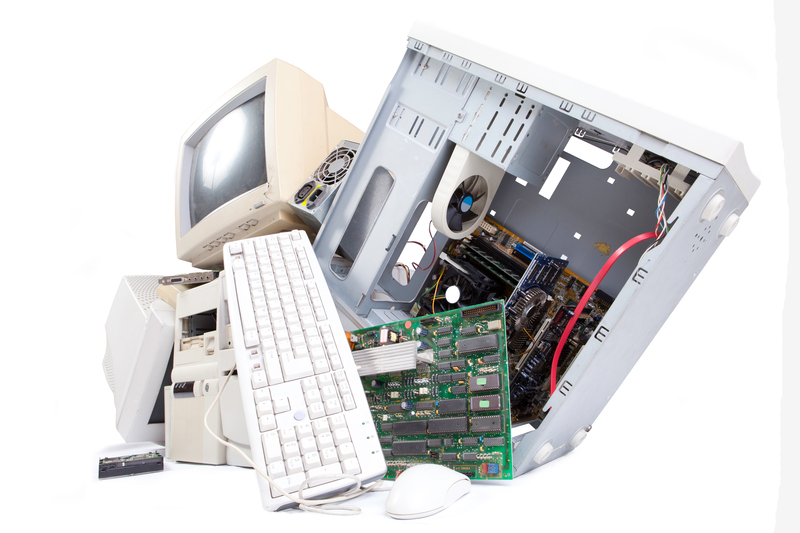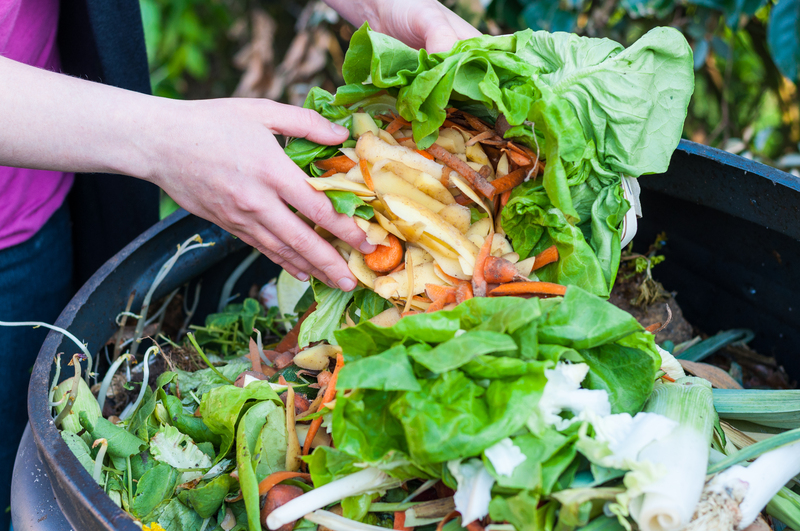Practical Tips for Properly Disposing of PPE Waste
The usage of personal protective equipment (PPE) has soared globally, especially in the wake of pandemics and heightened public health awareness. Items such as face masks, gloves, gowns, and face shields are vital tools for safeguarding health, but their increasing prevalence raises a critical concern: How do you correctly and responsibly dispose of PPE waste? This comprehensive guide offers actionable tips and best practices for disposing of PPE waste safely, efficiently, and in an environmentally conscious manner.

Why Is Proper PPE Waste Disposal Important?
Improper disposal of PPE waste poses significant risks to both human health and the environment. Used PPE can be contaminated with infectious agents, threatening sanitation workers, the general public, and wildlife. Furthermore, standard PPE materials like plastics contribute to environmental pollution if not managed responsibly. By embracing correct PPE waste management strategies, you protect not only yourself but also the community and planet.
Environmental Impacts of PPE Waste
- Non-biodegradable: Many disposable PPE items are made from plastics and synthetic fibers that persist in the environment for centuries.
- Microplastic Pollution: Weather and UV exposure break down PPE items into microplastics, polluting water sources and soil.
- Wildlife Hazards: Animals may get entangled in or ingest improperly discarded PPE, causing injury or death.
- Landfill Overcrowding: The disposal of massive PPE volumes increases the burden on landfills worldwide.
Understanding the Different Types of PPE Waste
PPE waste originates from several environments: hospitals, industrial workplaces, public transport, schools, and private households. The disposal needs and risks vary depending on the type and extent of contamination.
Common PPE Waste Items:
- Face Masks and Respirators
- Disposable Gloves (Nitrile, Latex, Vinyl, Polyethylene)
- Gowns and Aprons
- Face Shields and Goggles
- Shoe Covers and Caps
Healthcare facilities may generate biohazardous PPE waste, while the general public mainly produces non-clinical PPE waste. Both require careful attention to minimize pollution and health hazards.
Best Practices for Safe PPE Waste Disposal
Following a systematic approach to disposing of used masks, gloves, and related items ensures maximum safety for yourself and waste handlers. Below are targeted tips on dealing with PPE waste in homes, public spaces, and healthcare settings.
1. Separate PPE Waste from Regular Trash
Tip: Always separate used PPE from general recyclable waste. PPE items such as masks and gloves should never be recycled because of contamination risk and material incompatibility with recycling systems.
- Use a dedicated, lined trash bin for PPE waste.
- Keep PPE waste bags sealed and handle with gloves if possible.
Never flush PPE items like masks, gloves, or wipes down the toilet. Improper disposal can clog plumbing and pollute water systems.
2. Proper Storage and Packaging
- Place used PPE in a double-layered or thick plastic bag before disposal.
- Tie the bag securely to prevent any contact with its contents.
- If possible, label bags as "PPE Waste" to alert sanitation workers.
3. Observe Local PPE Waste Disposal Guidelines
Local regulations often dictate appropriate PPE disposal methods, which may differ depending on contamination risk. Check your municipality's website for guidelines.
- Some cities have dedicated PPE waste collection services or drop-off points.
- Healthcare and industrial sectors must follow strict hazardous waste protocols.
4. Minimize Handling of Used PPE
- Remove used PPE carefully to avoid touching the outside surfaces.
- Wash hands immediately after disposing of PPE items.
- Sanitize the disposal bin regularly.
5. Don't Reuse Single-Use PPE
Remember, single-use PPE is designed for one-time usage only. Attempting to reuse disposable PPE increases contamination risks and reduces effectiveness.
6. Consider Environmentally Friendly Alternatives
- Use washable, reusable masks where safe and appropriate.
- Choose compostable or biodegradable PPE products when available.
- Support brands that use sustainable materials in disposable PPE.
Disposing of PPE Waste at Home: Step-by-Step
Step 1: Remove PPE Safely
- Take off gloves by turning them inside out without touching the outside.
- Remove masks by holding the ear loops or ties, not the front.
- Avoid touching your face during removal.
Step 2: Bagging and Sealing PPE Waste
- Place used items in a sealable plastic bag.
- For higher-risk scenarios (illness or exposure), double-bag and tie securely.
Step 3: Safe Disposal
- Dispose of the sealed bag in your regular trash--never in recycling bins.
- If your city offers special collection, follow those procedures.
Step 4: Hand Hygiene
- Wash hands thoroughly with soap and water after handling PPE waste.
- If soap is unavailable, use hand sanitizer with at least 60% alcohol.
Step 5: Clean and Disinfect Disposal Area
- Wipe down bins and surrounding surfaces with disinfectant regularly.
- Replace bin liners often to maintain cleanliness.
PPE Waste Management in Healthcare and Workplaces
Medical and industrial settings generate far more PPE waste than households. They must meet strict legal and safety standards to prevent hazardous exposure.
Healthcare PPE Waste Disposal Protocols
- Use color-coded bins (often yellow or red) explicitly labeled for biohazardous PPE waste.
- Do not mix PPE waste with sharp objects or pharmaceuticals--segregate streams.
- Seal containers before transfer to designated medical waste treatment facilities (incineration, autoclaving, or chemical disinfection).
Note: Unauthorized disposal of contaminated PPE is subject to regulatory penalties.
Workplace PPE Disposal Guidelines
- Install clearly marked PPE disposal bins in strategic, high-traffic locations.
- Train employees on proper removal and disposal procedures.
- Contract certified waste disposal firms for PPE waste pick-up and processing.
Innovative Solutions for PPE Waste Reduction
Sustainable PPE Products
- Biodegradable masks, made from plant fibers or compostable polymers.
- Reusable protective clothing and face shields.
- PPE recycling schemes (currently limited but likely to expand as technologies develop).
Recycling and Reprocessing Initiatives
- Some organizations have launched pilot projects to clean, sterilize, and recycle certain types of PPE.
- Used PPE is sometimes repurposed as energy feedstock (waste-to-energy incineration).
Public Education and Awareness
- Community campaigns to raise awareness about the dangers of PPE littering.
- School programs teaching students proper PPE waste handling.
- Online guides and info-graphics from health authorities and environmental groups.
FAQs: Practical Questions about PPE Waste Disposal
Can PPE like masks and gloves be recycled?
Generally, no. Most recyclable facilities do not accept PPE due to contamination risk and material incompatibility. Place used PPE in regular trash unless a specialized local PPE recycling program exists.
Is it safe to burn PPE waste at home?
Absolutely not. Burning PPE in household fires releases toxic substances and harmful particulates. Proper disposal involves safely sealed landfilling or certified high-temperature incineration (by professionals).
What should I do if I see PPE litter in public spaces?
If you choose to pick it up, use gloves or a litter picker, place PPE in a secure bag, and dispose of it responsibly. Always wash your hands after handling PPE waste. Contact local authorities if there is a significant amount of improperly discarded PPE.
Are there any innovative PPE waste recycling programs?
Yes! Some specialized companies are developing systems for cleaning and recycling disposable masks and gloves. These programs are not yet widespread but show promise for future, large-scale PPE waste solutions.

Key Takeaways
- Always treat used PPE as potentially infectious and dispose of it safely.
- Do not recycle PPE with household recyclables.
- Follow local regulations and use dedicated disposal bins when available.
- Reduce, reuse, and seek sustainable PPE alternatives where possible.
- Educate others about the importance of proper PPE waste management to protect public and environmental health.
Conclusion: Your Role in Responsible PPE Waste Disposal
As PPE becomes a new normal in daily life, being diligent about how you dispose of PPE waste is essential for both personal safety and environmental conservation. By following these practical PPE disposal tips--from separating and sealing to seeking reusable alternatives--you contribute to a cleaner, safer, and more sustainable world. Proper PPE waste disposal is everyone's responsibility--be part of the solution!